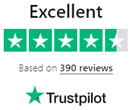In the first 5 years of opening, about 50% of businesses close their operations. This Bureau of Labor statistic shows that failure is common, especially for startups. But not every business is going to opt for filing for bankruptcy despite their issues with debt.
Filing for bankruptcy is a great option if you want to escape the endless cycle of debt. There are many other options that you could also explore, including debt management and settlement. However, let’s learn about bankruptcy first.
Filing for Bankruptcy: What it Means
What does it mean to file for bankruptcy?
Bankruptcy filings have dropped by 6.3%. This means that not many people are filing for bankruptcy despite dealing with debt year after year. Business owners might be stuck in a constant debt cycle with nothing to provide them relief as more debt piles on. Filing for bankruptcy is a viable option.
Bankruptcy is a legal proceeding that businesses might have to undergo during their business cycle. The court may summon a company that is unable to pay its outstanding debts and conduct the filing on behalf of the debtors.
However, often a business itself can also initiate the process. During this procedure, the court will consider the debtor’s assets and debt, evaluating the type of bankruptcy that applies. It may decide whether the assets can be used to repay the debt accordingly.
Should I File for Bankruptcy?
Instead of considering whether you should file for bankruptcy, it is more important to consider the value of your assets against your debts.
The more often you find yourself caught up in the vicious debt cycle, the more likely you are headed toward bankruptcy. It is important to consult a trusted advisor like Solid Ground Financial to take you through the process and help you understand bankruptcy.
Although filing for bankruptcy can lead to business closure, you can also begin another business as soon as you collect the funds and negotiate how much debt you have to pay. Plus, your credit history may not even show this declaration of bankruptcy after ten years.
The First Debt Relief Option: Filing for Bankruptcy
Here are three main types of bankruptcy;
1. Chapter 7
This type of bankruptcy is called liquidation, which involves a complete shutdown of the company and liquidation of the assets. This is the one that is most likely when you are filing for bankruptcy. However, it should only be chosen if you think there is nothing to gain from the business idea.
2. Chapter 11
CEOs that believe their business has enough value to be continued even after the bankruptcy is declared usually opt for this kind of bankruptcy. With this type, the debtor plans repayment in such a way that encourages the continuation of business operations and avoids liquidation of assets. However, this must be submitted for approval.
3. Chapter 13
This type of bankruptcy is much like Chapter 11, except it is for sole proprietors. Here, you can keep those assets and property associated with the business if you assure the creditors you can work with a different repayment plan and pay back in the next couple of years.
Solid Ground Financial can help you decide the kind of bankruptcy to declare and help you escape the debt cycle! If you are looking for answers to all your difficult questions, you’ll find them here.
The Second Debt Relief Option: Debt Management Plans
Opting for a debt management plan helps you fully pay off unsecured debts like credit cards. Often, these payments come at a reduced interest rate and allow you to pay smaller amounts than those distributed to your creditors.
You can do this through a trusted debt consolidation company that allows you to consolidate most of your debts. Once you start paying the debt, it can distribute them to you.
The Third Debt Relief Option
Consider borrowing from one of the many credit options you have. You can take a personal loan or simply consider approaching an online lender. Once you have the amount, you can provide all your creditors with the desired amounts and then keep paying off that consolidated debt over time.
You could consider contacting your creditors, explaining your situation, and handling all the consolidation yourself too. You could also get a 0% initial interest rate credit card and pay through that. This is only possible if you have a good credit score, as that will initially get you the 0% balance transfer offer. In the interest-free period, all of your money is focused on paying off the debt.
Eventually, the debt consolidation loan will pay off everything, leaving you with a lower interest rate for your consolidated loan. As long as you pay on time, you will get away with the options listed above. However, it may be harder without an advisor.
Consider adding an advisor to your already existing plan for debt relief. Your advisor can help you choose which bankruptcy to file for and the debt relief options to choose.

Final Thoughts
Filing for bankruptcy doesn’t have to mean that you have given up. It could be the start of something new as you let go of all of that baggage and begin with a fresh mindset. If you are worried about your business idea, perhaps you could consider a different kind of bankruptcy option other than liquidation.
Solid Ground Financial can help. Our trusted advisors stay by your side from day one and help you figure out the nitty-gritty details that can get you debt free in no time. However, it is important to reach out and ask for help when you need it! Contact us today to learn more.




